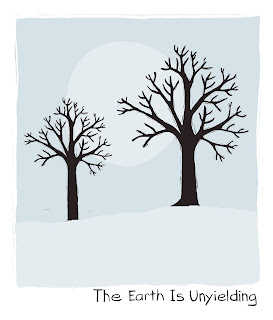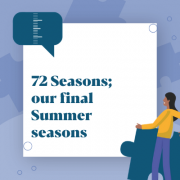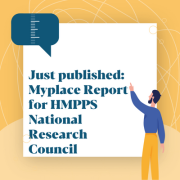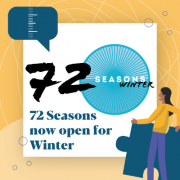18 reasons to love Winter; a creative evaluation of wellbeing
18 reasons to love Winter; a creative evaluation of wellbeing
72 seasons is a year-long research project, designed by Kirsty Rose Parker (founder & director of The Evaluator), to measure how being more connected to nature makes us feel. We do that through working with a team of volunteer seasonal seekers. We have planned a whole year – 2020 – where the seasons change every 4 or 5 days, originally inspired by the ancient natural calendar in Japan.
Our seasonal seekers agree to complete health and wellbeing research surveys and then they start their adventure. Trying to notice the changes in nature, we are building a community around Pendle Hill who look a little bit closer, a little bit more often, even just from their gardens and windows as the world changes. We had never heard of Coronavirus when this project began on 1st January 2020; but despite the changes in our daily lives and massive upheavals in our wellbeing, nature soldiers on, and so do we.
Here we share the results of the nature we have spotted. 180 people began this journey with us, a few have left and a few have since joined. We are a community that ebbs and flows, and people can choose how involved they get.
In 2020, we changed the season ‘Winter’ into 18 smaller seasons and asked our seasonal seekers to go out and about as much as they normally would, and see what they spotted.
The beautiful seasonal illustrations are by local artist, Cath Ford. You can check more of her work out here. Cath lives in Blackburn and she knows the nature we know. She is a very talented artist and we feel very lucky to be working with her.
Season; 1 – 4 January: The Earth is Unyielding
Season; 5 – 9 January: Bare Branches are Stark
Season; 10 – 14 January: The First Snowdrops Emerge
Season; 15 – 19 January: The Robin Calls
Season; 20 – 24 January: Frost Crackles Underfoot
Season; 25 – 29 January: The Earth hides in Grey Mist
Originally we were going to call this season ‘The Earth is White’ but very little white was found by our seekers. One explorer shared a little tiny bit of white earth, and another spotted some white, but overall there wasn’t much white to be found.
We only keep a season if more than 50% agree with it. Our seasonal seekers complete short surveys throughout the project and we ask them if they have noticed a season or not. We occasionally ask them other questions too.
When we change a season we look for what people are sharing and telling us and then rename it. It was clear people were sharing images of mist.
In the image above, Pendle Hill is hidden by the mist! That is actually quite common around here. If you can’t see Pendle, you know the weather isn’t great. It’s also what the famous book by Robert Neil is named after; ‘Mist over Pendle’ is a dramatic retelling of the events of 1612 which led to the Pendle Witches being tried for witchcraft at Lancaster Castle, culminating in 10 lives lost.
It was about this point where people began to start sharing many more nature images. Kirsty Rose Parker explains, “I was feeling a bit worried about the project as so many of the first seasons seemed wrong. Even though everyone agreed it was a really mild January, it was difficult to trust the process at that time. However, looking back, so many seasons being incorrect right at the start seems to have given our nature seekers confidence to take part more and be more vocal.”
Not just vocal, but visual too! People were really taking time to look around, to notice the finer details in nature and to share those images with a like-minded, local audience.
People also started to look out for previous seasons and to notice that things were early or late, sometimes missing. Here one of our seasonal seekers had remembered the snowdrop season from earlier in the month.
And another remember the season about Robins and shared an image after spotting one. One person told us, “it has encouraged me to keep my own nature diary of all the things I see”
Season; 30 January – 3 February: Morning Grass Glistens
And, talking of remembering previous seasons, Cathy Dobney spotted some white. we really loved the subtlety of this image!
We had planned to call this season ‘Spider Webs Glisten’, and Cath Ford had drawn a lovely image. We will try and work this into a future season, in Autumn. Sam’s image above was one of the few webs spotted, so we changed this season too.
Season; 4 – 7 February: Spring Winds Shake Raindrops
Season; 8 – 13 February: The Curlew Calls
Season; 14 – 18 February: Spring Is In The Air
One of our seasonal seekers noticed a meeting of herons and shared a photograph on St Valentine’s Day; maybe love was in the air? Another seeker told us that she always felt that herons were a good omen, and we found out collectively that a group of herons is a ‘siege’. It was lovely to see the group really starting to bond.
Season; 19 – 23 February: The Earth Becomes Damp
At this point in the year, Storm Ciara was recent and people across the UK were flooded. Storm Dennis finished on the first day of this mini season. There was so much rain, it was literally torrential. It was a sad time.
But, nature comforts. Here a seasonal seeker shared a photograph, possibly thinking of ‘white’ but another seeker commented, “Oh how pretty that looks. Like a Christmas Card.”
Season; 24 – 28 February: Haze First Covers the Sky
Unsurprisingly it proved quite tricky to get photographs of haze. Luckily, one of our plucky seekers managed it.
Season; 1 – 5 March: Plants Show Their First Buds
We really love this image from Cath. They are all special, but there is something about this one. This season is also where the natural world and the weather seemed to start changing into something more hopeful. Maybe that is why?
Another seasonal seeker took a nice picture of redcurrent buds on the 4th March, as we had shared a blurry version! It really was starting to feel like we are all in this together.
People were starting to share their feelings more about nature. One seasonal seeker told us, “Ooh spring makes me feel so happy!”, as they shared an image of wild garlic emerging in Townley park.
It is nice when a season is correct and everyone spots it. Then there is a feeling, a certainty, that this is right. It’s hard to explain. It is linked to a feel of community. This quote by Alan Bennett helps to explain it…
“The best moments in reading are when you come across something – a thought, a feeling, a way of looking at things – that you’d thought special, particular to you. And here it is, set down by someone else, a person you’ve never met, maybe even someone long dead. And, it’s as if a hand has come out, and taken yours.”
While organising permissions for these photographs, we noticed how many of our names are plant or nature related – surnames like root, earthup, rose, for example. We wondered if having a natural surname means genetically you are more likely to enjoy nature? Or possibly just more predisposed to notice more nature? Or maybe you are always likely to have this many nature names in any selection of people? We haven’t asked for personal details in this project, so it’s not a tangent we can go and follow!
Season; 6 – 10 March: Hibernating Creatures Open Their Doors.
After just explaining how important it was that the project was open widely, this season does seem to require access to a garden. However, although hedgehogs might be quite famous hibernators, bumblebees, some butterflies, ladybirds, bats, and slow worms are all creatures commonly found in the UK that hibernate.
We managed to find a bee that did look like it had just woken up. It spent about twenty minutes sat on the dandelion warming up before flying away. Another seasonal seeker explained, “that will be a Bumble Queen. They sometimes sunbathe to warm up before they can fly.”
Season; 11 – 15 March: The Butterbur Flowers.
Butterburs do look quite strange and alien when they flower, and can be seen in wild grounds but particularly near canals and streams. Cath Ford, our artist was thrilled to get to draw a butterbur!
Season; 16 – 20 March: The Magnolia Blooms
People often have Magnolias in front gardens and they are quite distinctive and easy to spot, regardless of whether you own a magnolia or not. They are scented, so worth sniffing if you see one.
Our seasonal seekers responded well to this one, as Tammie began Magnolia watch on the 18th March. This season is possibly a little early, but the majority of people agreed with it, so we have kept it.
At this moment in time, the world began to slow down for Coronavirus, but it was a good time to spot wildlife. Our seasonal seekers shared some really lovely wildlife images.
We also are very pleased that this project can all be done from home, and that it continues to run and to provide solace in difficult times. Many people know that nature continues and provides comfort, but paying attention to the subtle changes we hope will help wellbeing for everyone taking part.
Season; 21 – 25 March: The Sparrow Builds Her Nest
It has been such a comfort to have a group to talk to about nature, to share our daily walks with, to keep working for (although here at The Evaluator we can work 100% from home, so we are doing).
When we first planned this project, we had thought it would impact on people’s wellbeing, but had not envisaged just how much it would impact on our own – or how our wellbeing would be collectively challenged during the Covid-19 lockdown.
Season; 26 – 30 March: The First Cherry Blossoms
And that brings us to the end of Winter. The 72 seasons continue; they will throughout the whole of 2020. It seems fitting to end on Cherry Blossom, as the Japanese season of
Sakura is famous across the whole world, and it was the ancient natural Japanese calendar which inspired the whole project.












































































 Kirsty Rose Parker
Kirsty Rose Parker

